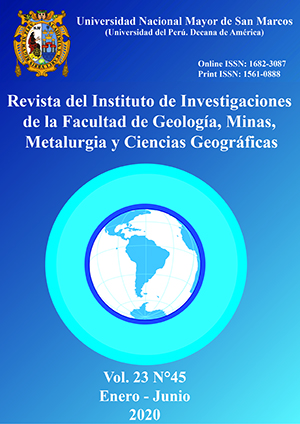Impact of socio-environmental conflicts on tourism management. Cajamarca department case
DOI:
https://doi.org/10.15381/iigeo.v23i45.18045Keywords:
Socio-environmental conflicts, tourism management, multiple linear regression, hotel offer, national visitorsAbstract
This research aims to determine what types of socio-environmental conflicts impact tourism management, according to the average stay (days) in the department of Cajamarca. For this, a research with a quantitative approach was developed, the research design was non-experimental, longitudinal and correlational. The monthly reports of the social conflicts of the Ombudsman’s Office were used, as well as the monthly statistical reports from the Ministry of Foreign Trade and Tourism (MINCETUR, s. f.) during the period of the years 2005 to 2018. The analysis of correlation and regression using the SPSS 24 program. The results showed that active socio-environmental conflicts are the factor that has the greatest influence on the multiple linear regression model, presenting a negative impact on the average permanence (days) of the population in the department of Cajamarca. In addition, active and latent socio-environmental conflicts have a moderate magnitude relationship and negative trend with respect to the average of foreign visitors to tourist sites, museums and natural areas and to the hotel offer, according to the number of lodging establishments respectively; while active socio-environmental conflicts with dialogues have a moderate magnitude relationship and a positive trend regarding the arrival of national and foreign visitors to the department of Cajamarca.
Downloads
Published
Issue
Section
License
Copyright (c) 2020 Erick Chávez Flores

This work is licensed under a Creative Commons Attribution-NonCommercial-ShareAlike 4.0 International License.
AUTHORS RETAIN THEIR RIGHTS:
a. Authors retain their trade mark rights and patent, and also on any process or procedure described in the article.
b. Authors retain their right to share, copy, distribute, perform and publicly communicate their article (eg, to place their article in an institutional repository or publish it in a book), with an acknowledgment of its initial publication in the Rev. Inst. investig. Fac. minas metal cienc. geogr.
c. Authors retain theirs right to make a subsequent publication of their work, to use the article or any part thereof (eg a compilation of his papers, lecture notes, thesis, or a book), always indicating the source of publication (the originator of the work, journal, volume, number and date).






